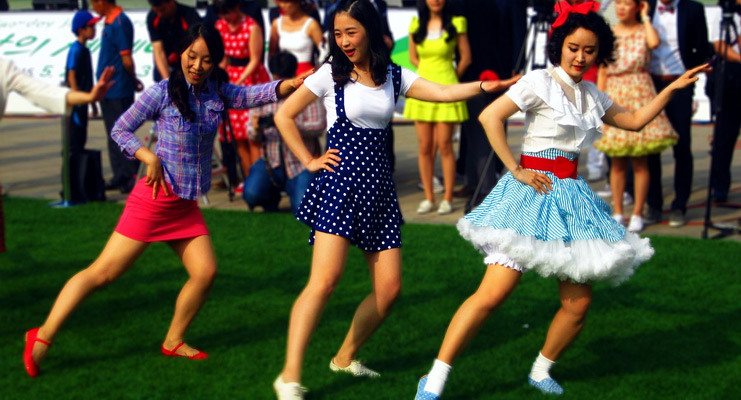East Coast Swing and West Coast Swing are two popular partner dances developed in the United States in the mid-20th century. Despite their similar names, these two dances are quite different in terms of their origins and steps. In this blog post, we’ll explore the major differences between East Coast Swing and West Coast Swing so that you can decide which style is right for you.
East Coast Swing vs. West Coast Swing: Origins
East Coast Swing originated on the East Coast of the United States in the 1940s, while West Coast Swing originated on the West Coast of the United States in the 1950s. Both dances were born out of a need to simplify the steps of Lindy Hop, another popular partner dance of the time.
While Lindy Hop was originally danced to big band music, East Coast Swing and West Coast Swing were designed for dancing to a wider range of music, including rock & roll, blues, and country.
East Coast Swing vs. West Coast Swing: Music
East Coast Swing music is typically characterized as fast-paced and energetic, focusing on big band, blues, or rock and roll styles. Today, East Coast Swing is often danced to upbeat pop music, which creates a more lively atmosphere. This style of Swing dancing is faster-paced than West Coast Swing and is known for its exciting moves and patterns.
When students say they want to learn how to East Coast Swing, they want to learn the jitterbug, rock and roll, or a similar dance. East Coast Swing is typically danced at a speed range of 136 to 144 beats per minute.
West Coast Swing dancing has increased in popularity since you can dance it to various types of music, including slow and fast blues, contemporary music, hip hop, pop songs, top 40’s songs, and country songs. The speeds of the music for this type of swing generally vary between 90 and 120 beats per minute.
West Coast Swing dancers are encouraged to use their musicality to interpret the music they are dancing to. This is done by matching body movements to the sounds of the beats, “hitting the breaks” in the music with appropriate matching moves, and acting out the lyrics of the songs.
East Coast Swing vs. West Coast Swing: Steps
The most noticeable difference between East Coast Swing and West Coast Swing is their respective step patterns. West Coast Swing is more of a slotted dance, while East Coast Swing is a rotational dance. Both dances are usually performed in a small area when performed socially. However, they can cover the whole dance floor in competitions or show dances.
East Coast Swing is a high-energy dance characterized by bouncy rock steps and triple steps danced as a chasse. The dance is characterized by its bouncy and energetic movement. This is done through kicks and flicks of the legs and feet, as well as through swinging the hips. It often involves lifting the knees between steps, which helps showcase the music’s high energy.
The basic steps of West Coast Swing are a walk, walk, triple step, and triple step. The Anchor Step is the last triple step of each pattern. West Coast Swing is a smooth dance emphasizing the connection with your partner, musicality, and footwork.
Final Thoughts
So, which swing dance style is right for you? East Coast swing is your best bet if you’re looking for a fast-paced, high-energy dance. However, if you’re looking for a slower, more sensual dance, then West coast swing is more your style.

